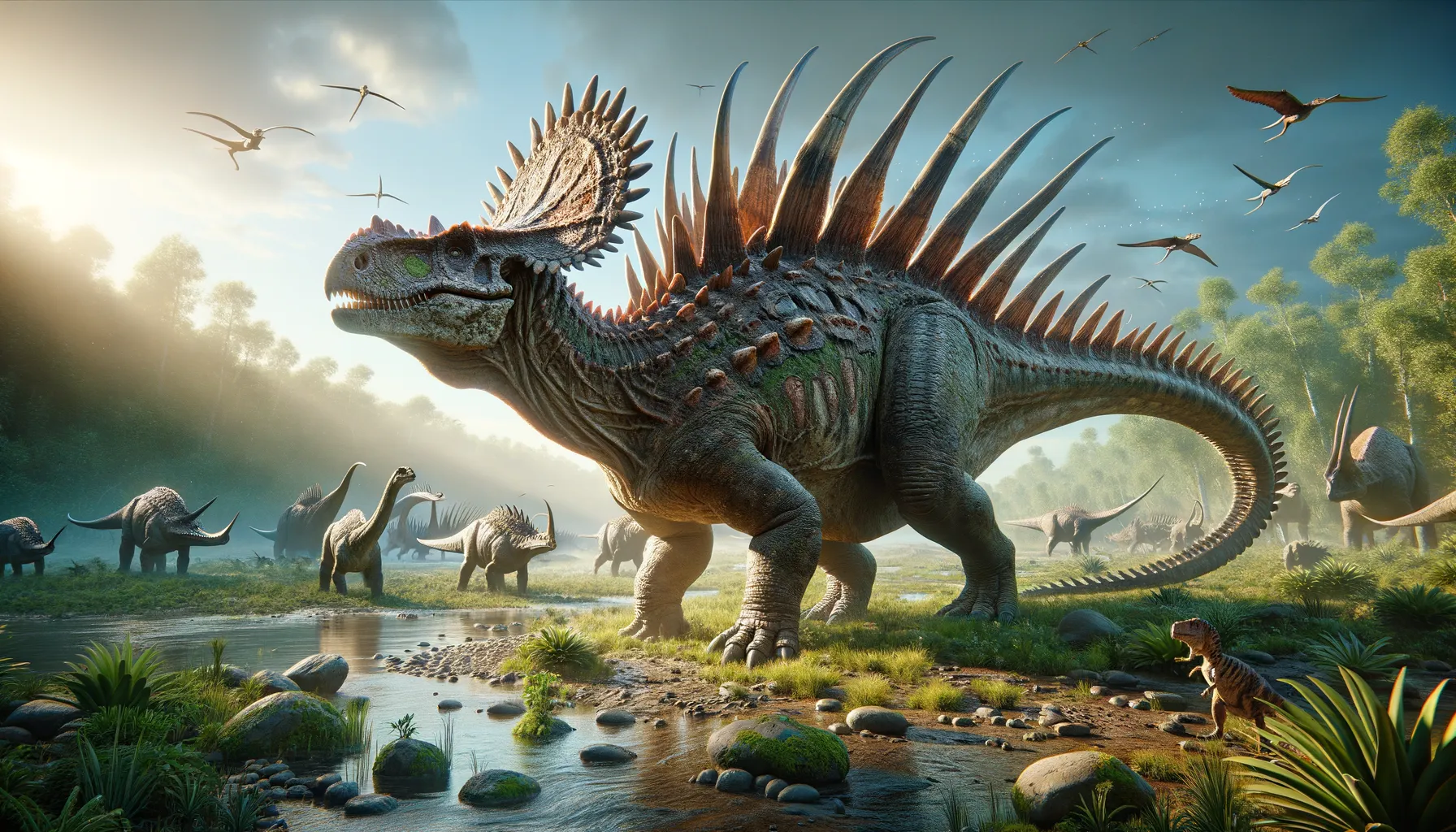
Invictarx
Armored guardian of prehistoric landscapes.
Period
Cretaceous
Length
Roughly 6 meters in length.
Height
About 2 meters tall at the shoulder.
Weight
Approximately 1.5 tons.
Invictarx was a robust, medium-sized herbivorous dinosaur from the late Cretaceous period. It belonged to the family of armored dinosaurs called nodosaurids, displaying a distinctive array of bony armor plates along its back and tail. Invictarx roamed the ancient floodplains that covered modern-day Utah, surviving in a diverse ecosystem of prehistoric plants and other dinosaur species. Its sturdy physique and protective features made it well-adapted to its environment.
Diet
Invictarx was an herbivore, mainly feeding on low-lying vegetation. Its diet consisted of various prehistoric plants, including ferns and cycads, which it could easily graze on due to its low stance.
Hunting
As a herbivore, Invictarx did not hunt. Instead, it foraged and grazed in close proximity to its habitat, making the most of the abundant plant life in the lush floodplains.
Environmental challenges
Invictarx faced environmental challenges from predators such as large theropods, which required its defensive body armor for protection. Seasonal changes impacted the availability of its plant-based diet, potentially leading to migration or adaptation strategies. Competition for resources with other herbivores would have also posed challenges, particularly during periods of environmental strain.
Speed
Relatively slow due to its heavy body build.
Lifespan
Estimated to be several decades similar to other herbivores.
First discovery
Discovered in the Kaiparowits Formation of Utah in 2018.
Fun Facts
- Invictarx is a type of armored dinosaur known as an ankylosaur, which lived during the Late Cretaceous period.
- The name 'Invictarx' means 'invincible fortress,' a nod to its protective bony armor plating.
- Invictarx fossils were discovered in what is now New Mexico, USA.
- This dinosaur was relatively small for an ankylosaur, estimated to be about 8 to 10 feet long.
- Invictarx's bony armor would have helped protect it from predators of its time.
- It likely had a plant-based diet, feeding on low-lying vegetation.
- Despite its tough exterior, Invictarx was a gentle herbivore.
Growth and Development
Invictarx likely experienced steady growth throughout its early years, supported by a plant-rich diet. It developed its distinctive armored plates as it matured, providing essential protection in adulthood. Studies suggest that genetic and environmental factors both played a role in its growth patterns, giving rise to its robust physical characteristics.
Habitat
Its habitat consisted of lush floodplains that were rich in vegetation and water sources. The Cretaceous ecosystem supported a variety of species, creating a dynamic environment for Invictarx. Seasonal flooding and climatic conditions shaped the landscape, influencing the availability of food and water resources.
Interaction with other species
Invictarx interacted predominantly with other herbivores, occasionally competing for food resources. Predators were a constant threat, influencing its defensive behaviors and need for protective armor. Symbiotic relationships with certain plants might have existed, with Invictarx aiding in seed dispersal as it fed.
Natural lifespan
Its natural lifespan was akin to that of other large herbivores, spanning several decades.
Reproduction
Invictarx likely reproduced via egg-laying, similar to other dinosaurs. Nesting sites were probably located in secluded or secure areas to protect the eggs from predators. The young were likely precocial, having the ability to move and feed with some independence soon after hatching.
Social behaviour
Invictarx may have exhibited herd-like grouping behavior, aiding in protection against predators. Such social structures could have facilitated resource sharing and communal care of the young. The dynamics within these groups would have played a critical role in survival and interaction with the environment.
Fossil locations
The fossils of Invictarx have been primarily found in the Kaiparowits Formation in Utah, providing insight into its existence and environment. This area is known for yielding significant paleontological discoveries from the late Cretaceous period. The fossil record for Invictarx helps reconstruct the ecological settings in which it lived.
